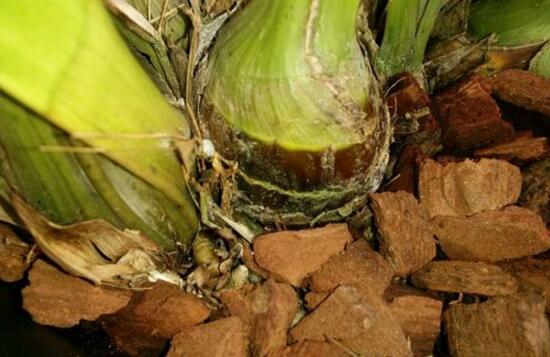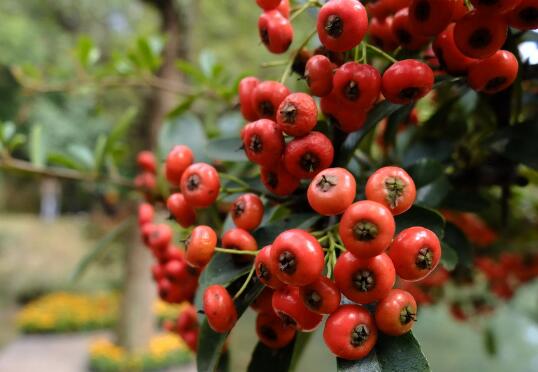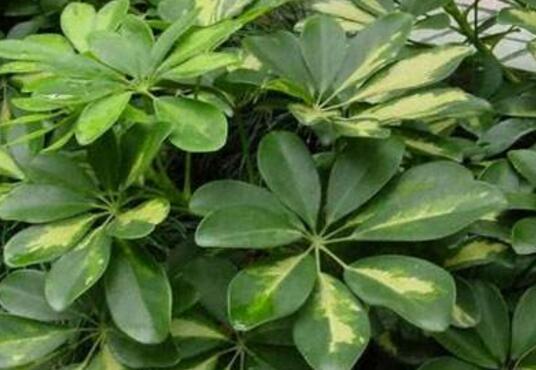What about the rotten roots of Cymbidium, the treatment of the rotten roots of Cymbidium / change the pot in time
Cymbidium, a hybrid variety of orchids, has large flowers and rich colors, so it is deeply loved by flower friends. In life, many people raise Cymbidium, but in the process of breeding, they often encounter the phenomenon of rotten roots. What about the rotten roots of Cymbidium? Next, the editor will bring you several treatments for the rotten roots of Cymbidium.
First, what about the rotten roots of Cymbidium? find the cause

After flowering, Cymbidium is very elegant and magnificent with bright colors. Many of the flower friends who raise it are novice. For various reasons, they often feed the roots of Cymbidium. What about the rotten roots of Cymbidium? At this time, do not worry, we should calmly look for the cause, the following are three kinds of Cymbidium rotten root causes and treatment methods, let's move on.
Second, the reasons for the rotting roots of Cymbidium.
1. Soil discomfort
There are many reasons for the rotten roots of Cymbidium, we should first think of soil factors. In the cultivation method of Cymbidium, it has been said that it needs loose soil, so once the soil is not loose and the root permeability is poor, it is easy to cause anoxic rot of the root.
2. Overwatering
Cymbidium likes a moist environment, but it has fleshy roots and can store water. Therefore, too much watering will cause stagnant water in the basin soil and poor breathing at the roots, which can easily lead to rotten roots of Cymbidium, and then there will be symptoms of yellowing of Cymbidium leaves.
3. Improper fertilization
During the growth of Cymbidium, we have to fertilize it properly, but this is difficult to control. Many novices will fertilize too much or too much, resulting in fertilizer damage, resulting in rotting roots. Generally speaking, there are only three reasons for the rotten roots of Cymbidium. Next, let's take a look at the treatment methods.
Third, the treatment of rotten roots of Cymbidium.
1. Root cutting
If the roots of Cymbidium grown at home are rotten, don't worry, first pull out the whole plant, and then cut off its rotten roots and withered leaves. Note that the sundries next to the rotten roots should also be cut off to avoid the spread of festering parts and deepen the disease of Cymbidium.
2. Disinfection
After cutting off the rotten part, we need to disinfect the plant. Specific operation: Cymbidium is disinfected with 1% potassium permanganate, soaked for two hours and then washed, put in the sun for a period of time. After that, it can be replaced with a new soil, and the editor recommends a mixture of water moss, bark, vermiculite, rotten leaf soil and peat soil.
3. Change the basin
After completing the above steps, there is only the last step left in the treatment of the rotten roots of Cymbidium, and that is to change the basin. Change the treated Cymbidium to a well-ventilated, deeper basin, where you can put some wood or bricks at the bottom to increase ventilation. Then often spray water around the leaves every day, and often open windows for ventilation, I believe that soon your plant will return to health.
Through the above introduction, I believe that if you encounter the symptoms of rotten roots again, you should know how to do it! Generally speaking, Cymbidium is not difficult to raise, as long as everyone is more careful, rotten roots will not appear. Of course, there is no hurry, according to the above method of treatment. With regard to the causes and treatment methods of the rotten roots of Cymbidium, the editor has introduced this, hoping to give you some help.
[Cymbidium grandiflorum rotten root] how to do and save the rotten root of Cymbidium grandiflora
Cymbidium is a kind of plant that can keep evergreen all the year round, which is very suitable for indoor culture. Cymbidium is an axial growing orchid. When choosing a flowerpot, you need to choose a long tube-shaped pot. And the culture environment must be well ventilated, and charcoal should be added to the bottom of the flowerpot to facilitate drainage. The main purpose of this is to prevent the roots of Cymbidium from rotting. Because poor drainage or poor ventilation will lead to the root rot of Cymbidium, if the root of Cymbidium is half rotten, then Cymbidium can basically be judged to be finished. Here's what we should do if we encounter the rotten roots of Cymbidium.
What about the rotten roots of Cymbidium? 1. Cut off the rotten parts
Pour out the cymbidium and leave it in a cool, dry and ventilated place for one or two days. All the rotten roots that have blackened will be cut off, and the plants that lean against the rotten roots will be removed, leaving no hidden trouble. Be sure to water less, and less when watering nutrition and rooting water. In case it happens again.
2. Strictly disinfect orchid plants and plant materials.
Soak the orchid plant in 1 ‰ potassium permanganate solution for 2 hours, rinse with clean water, and dry in the sun for 2 hours. The new plant materials I use are: catalpa bark 50%, broken brick particles 20%, honeycomb cinder 20%, rotten pine needle 10%. After washing the first three kinds of clean water, soak and disinfect them with boiling water. Pine needles are exposed to the sun and sprayed with 2% topiramate solution for disinfection.
3. Switch to mud basin cultivation.
Cymbidium with rotten roots should not only have a certain degree of humidity, but also not be too wet. This requires good permeability. I chose two mud basins. In order to increase the air flow, I enlarged the water seepage hole at the bottom of the basin and put several long wooden strips on the bottom of the basin to increase the air permeability. Plant the sterilized Cymbidium in a basin, spread a layer of bark of 2-3 cm in diameter and broken bricks the size of walnut at the bottom, fill the middle with a medium-sized plant mixture, and top with the smallest one.
4. Daily management
After watering the roots of Cymbidium, Cymbidium was cured in low light for more than 10 days, sprayed twice a day, and placed on the south windowsill after half a month. About 1 month later, the plant grew new roots, and 3 months later, purplish red new buds grew on the pseudobulbs. It is not allowed to apply fertilizer before growing new roots, and only light fertilizer can be applied after growing new roots and new buds. 1-2 ‰ compound fertilizer is added to the water for raising goldfish.
In summer, the high temperature put a shallow plastic pot under Cymbidium, which filled with water, increased humidity, sprayed around the flowerpot every morning, middle and evening, and opened windows for ventilation to make it through the summer smoothly. When carbendazim or topiramate was sprayed every half a month, there were almost no diseases and insect pests.
In November, two fat flower buds grew on the pseudobulbs of the newborn seedlings closest to the windowsill. At this time, phosphate fertilizer was added every 10 days, and foliar buds were sprayed with 2 ‰ potassium dihydrogen phosphate, and all the new leaf buds were removed to concentrate nutrients on the growth of flower buds.
What about the rotten roots of Cymbidium
Placing several pots of Cymbidium indoors can increase the oxygen content of indoor air and improve the environment at the same time. Now that the outdoor air is poor, instead of buying an air purifier, we should choose to plant Cymbidium, which can cultivate sentiment and improve health at the same time. When planting Cymbidium, rotten roots sometimes appear, so what if the roots of Cymbidium are rotten?
What about the rotten roots of Cymbidium
1. The reason for the rotting root of Cymbidium-soil
If the cultivated soil of Cymbidium is not mature, it will generate heat. If this kind of soil is used to plant Cymbidium, the water will not evaporate easily and the air permeability will become worse. Therefore, Cymbidium in this case is very easy to rot roots, and bacteria can easily erode leaves and rhizomes.
2. the reason for the rotting root of Cymbidium-- fertilization
Cymbidium grandiflorum is fertilized too much, and the tears are too high, so that it burns Cymbidium grandiflora, resulting in root rot. Or too much watering, too much water content in the soil, will also lead to root breathing difficulties and rotting roots. At the same time, bacteria multiply more quickly in high temperatures, so bacteria pour in and cause rotten roots.
Third, what about the rotten roots of Cymbidium
Remove the rotten roots from the Cymbidium onion pot, peel off the outer soil and rinse with water. Then subtract the rotten root with scissors, soak the root in 0.1% potassium permanganate solution for 5 minutes, and then add carbendazim to dry in a cool environment.
- Prev

What is the reason for the yellowing of Firethorn leaves? the solution to the yellowing of Firethorn leaves / changing soil
In the process of cultivating Hippophae rhamnoides, if the flowers are not properly maintained, it is easy to have some adverse reactions, and the yellowing of leaves is one of them, so what is the reason why the leaves of Hippophae rhamnoides are yellow? What is the solution to the yellowing of Firethorn leaves? The following editor summarizes a few points for you.
- Next

What if the leaves of duck feet turn yellow and fall off? learn four tricks to prevent the leaves from falling off prematurely.
When the duck foot wood is in a suitable environment and the breeding method is correct, its leaves should be green all the year round, but some flower friends encounter the phenomenon that the leaves turn yellow and fall early when they are raised, which makes them very sad. How is it that the leaves of duck feet turn yellow and fall off? How should it be solved? Let's learn about it with the editor.
Related
- Fuxing push coffee new agricultural production and marketing class: lack of small-scale processing plants
- Jujube rice field leisure farm deep ploughing Yilan for five years to create a space for organic food and play
- Nongyu Farm-A trial of organic papaya for brave women with advanced technology
- Four points for attention in the prevention and control of diseases and insect pests of edible fungi
- How to add nutrient solution to Edible Fungi
- Is there any good way to control edible fungus mites?
- Open Inoculation Technology of Edible Fungi
- Is there any clever way to use fertilizer for edible fungus in winter?
- What agents are used to kill the pathogens of edible fungi in the mushroom shed?
- Rapid drying of Edible Fungi

